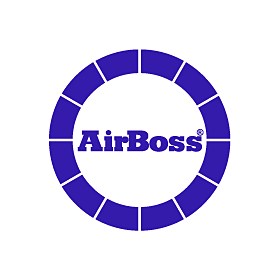AirBoss of America Corp
(TSX:BOS)
(OTC: ABSSF)
Chairman and CEO: Gren Schoch
President: Lisa Swartzman
Podcast: Play in new window
INTERVIEW TRANSCRIPTS:
Juan Costello: Good day from Wall Street. This is Juan Costello, Senior Analyst with the Wall Street Analyzer. Joining us today are Lisa Swartzman, the President of AirBoss of America Corporation, as well as the company’s Chairman and CEO, Gren Schoch. The company trades on the Toronto Stock Exchange, ticker symbol BOS. Thanks for joining us today there, guys.
Gren Schoch: Well, thank you.
Juan Costello: So starting off, can you talk to us a little bit about some of your stories and developments since our last interview, which was back in June of last year?
Gren Schoch: Well the principal thing that has happened over the last year is the continued growth in our rubber compounding business, continued growth in our automotive flexible products business, and the acquisition of IRT, which dramatically strengthens our defense business.
Juan Costello: And so what were some of the key drivers behind your recent financial results?
Lisa Swartzman: Well as Gren just mentioned, our rubber compounding business put in their best performing year ever. Total volumes are still down — they declined over 2014. Overall, over the last five years, we’re probably still about 20%, from a volume perspective, below where we were, primarily as the result of the decline in the resource and the mining sector, in particular. However we’ve been able to virtually double our EBITDA in that time. For last year, growth margin dollars increased by 30% over the prior year and EBITDA dollars improved 27% to 18.3 million. Tolling volumes remained strong last year, primarily in the 15 to 18% range of our total volume.
In our automotive business, sales grew 14% over the prior year to 143 million, and EBITDA dollars grew 29% to 17.3 million. Our Engineered Products business, which includes both our Defense and our Industrial Products business, was up quite significantly, primarily because of the acquisition of IRT. Our Industrial Products business continues to have some softness as a result of some of their market segments.
On a consolidated business perspective, our unadjusted EBITDA improved by one million and net income was essentially flat, however we were impacted by a number of charges that we incurred in the year that, in aggregate, negatively affected our fully diluted EPS by 30 cents. We had a share-based compensation expense of 6.2 million, which was -20 cents per share. We had acquisition and financing transaction expenses and fees of 2.5 million, or 7 cents a share, and we had restructuring costs related to our defense business — in relation to the closing down of one of our facilities and consolidating that into another one — of 1.1 million for the year, which was a further 3 cents.
Adjusting for those, our EBITDA for the year would have been 39.8 million versus the 30 million we reported, and our EBITDA margin would’ve been 13.1%.
Juan Costello: What are some of the steps that you are taking this year to further improve Rubber Compounding’s financial performance?
Lisa Swartzman: For the most part, we’re continuing on the trend and what we’ve been doing over the last five years, which, like I said, we’ve improved our EBITDA. We’ve doubled our EBITDA in five years, despite declining volumes. So we think that we’re on the right trend for what we’re focusing on, which is continuing to diversify our customer base and extend into higher margin compounds, in combination with our relentless attention to both operational efficiencies and focused changes in our support function.
With the changes and what’s been going on in the industry, we’ve been quite focused on what I’ll call our back office support and processes, starting with the way we go to market with our sales team, to how we do compound development, to commercialization. All of this is with the objective of increasing our speed to market and the efficiency of manufacturing smaller runs — which is the result of having a larger customer base, but largely smaller customers than where we were previously — without impacting the high level of customer service and the reputation we have in the industry.
Juan Costello: Certainly. In what ways do you see the recent IRT acquisition continuing to benefit the company over the next year and beyond?
Gren Schoch:Well the IRT acquisition is very complementary to our defense business in that they’re the leading manufacturer of filters for war gas and other consignments. They’re very important to the continued growth of our gas mask business, and as you recall, we’ve recently introduced a new state-of-the-art gas mask to the market. They also manufacture PAPRs which are powered air purifiers that go with the gas mask for uses in first responder, medical, and other applications.
There are other product lines, such as shelters and ISOPODs, helping increase the exposure to the first responder and healthcare markets. Our international sales platform, which we had established for our traditional defense products, is ideal to help distribute IRT’s products internationally. Having said that, the acquisition was made primarily for the long term, not the short term, and most of the benefits and growth we’ll see will be coming in a three-year time frame starting 2017.
Juan Costello: Great. So what are some of the ways that AirBoss plans to increase revenue and efficiency in the Industrial Products business over the next few quarters?
Lisa Swartzman: The Industrial Products business is and has experienced some softness due to volatility in many of its markets. It’s comprised of its own business and then is also the manufacturing site for our defense products. We consolidated one of our defense facilities into that facility, so the first order of focus for us is ensuring that we get up to speed on that. And then we’re working very diligently on some business development projects for new customers with diversified end-use applications, and we’re looking to consolidate both our sales force and our R&D functions.
Juan Costello: And what are some of the other goals and milestones that you’re hoping to accomplish over the course of the next six to twelve months?
Lisa Swartzman: Well, obviously with the acquisition of IRT, we are still very focused on continuing the integration there on all fronts. We started with the consolidation on the operational side. We started with four facilities. We will, by the end of this year, be down to two facilities. The next order of business on that front is closing down our dedicated R&D facility and bifurcating those functions into our Acton Vale site, where our molding is done. So, we will be putting any of the rubber-based technologies and R&D function up there, as well as moving anything associated with filter technology down to Landover, Maryland, which is where IRT’s facility is.
We’re also looking to continue, in this time period, to further along our development on the new products that we’re working on, primarily our low-burden gloves and new filter technology, and we are looking to further integrate our sales and marketing team. For our Automotive business, we’re looking to expand the partnerships and their global footprint, all of which is being used to provide a greater service to our existing customers, as well as expand the customer base, and enable us to bid on global platform tenders that are coming, as opposed to just domestic ones. And then in general, we are continuing to work to integrate across our division to reduce the number of silos, if you will, and to leverage our expertise that exists in our various divisions and implement the best practices and synergies across the business.
Juan Costello: Well good. So what are some of the current trends right now in the rubber and manufacturing industry, and how are you positioning the company to capitalize?
Gren Schoch: Well that’s a pretty broad question, but some of the major trends in the rubber compounding industry are continued consolidation of the industry. The oversupply situation that has existed for most of the last decade is gradually reducing as domestic demand grows and as suppliers are being consolidated. On the rubber manufactured product side, we are seeing a resurgence in North American demand as basic industries are picking up and obviously the strong North American auto industry has helped in that regard.
For a number of reasons, the OEMs are looking more to a North American supplier base for local production. They are looking for us to participate in their global supply basis, as Lisa was saying earlier, so I think AirBoss is very well-positioned to take advantage of the current trends.
Juan Costello: Right. So once again joining us today are Gren Schoch, the Chairman and CEO or AirBoss of America Corporation, as well as the company’s President, Lisa Swartzman. The company trades on the Toronto Stock Exchange, ticker symbol BOS, currently trading at 15.72 a share, Canadian. The market cap is around 365 million. Before we conclude here, to recap some of your key points, why do you believe investors should consider the company as a good investment opportunity today?
Gren Schoch: Well we see continued growth opportunities in all three of our key businesses. The company has been a public company since the early 1990’s, and over the long term has consistently outperformed the TSX index. Our growth has been organic and financed internally from internally generated cash flow and depth. We have grown to the size we are today with next to no equity issues. The last time we did one was in 1996. Management and insiders continue to hold over 27% of the stock, and are compensated based on financial metrics, which are favorable to the shareholders, including such things as IRR, ROE, and other profitability measures.
Juan Costello: Well, we certainly look forward to continuing to track the company’s growth and report on your upcoming progress and we’d like to thank you both for taking the time to join us today and update our investor audience on AirBoss. It’s always good to have you on.
Liza Swartzman: Thank you.
Gren Schoch: Thank you.




